This fun chemical reaction for kids is all about smell! What better way to test out our sense of smell than with a citric acid and baking soda experiment. We gathered up some of our favorite citrus fruits to test out. Which fruit makes the biggest chemical reaction; oranges or lemons? There’s only one way to find out! We love simple science projects for kids!
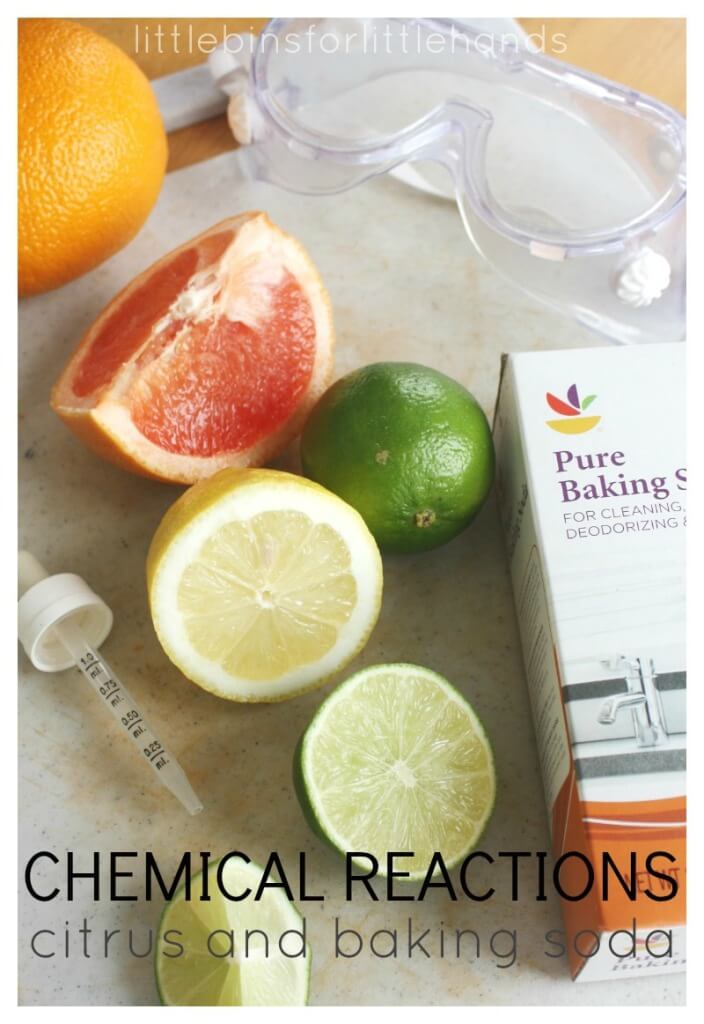
Explore Citric Acid and Baking Soda
Our citric acid science experiment is a fun variation on the traditional baking soda and vinegar reaction.
Typically a baking soda reaction involves vinegar, and that is what we generally use. However, certain fruits high in vitamin C or Ascorbic acid will produce a similar fizzy, bubbly reaction when combined with baking soda.
Our citrus acid experiments also have a much better smell than the traditional vinegar ones!
We love chemical reactions and have been exploring chemistry for kindergarten, elementary and older for almost 8 years. Make sure to check out our list of awesome Baking Soda Experiments perfect for learning and hands-on fun anytime of the year.
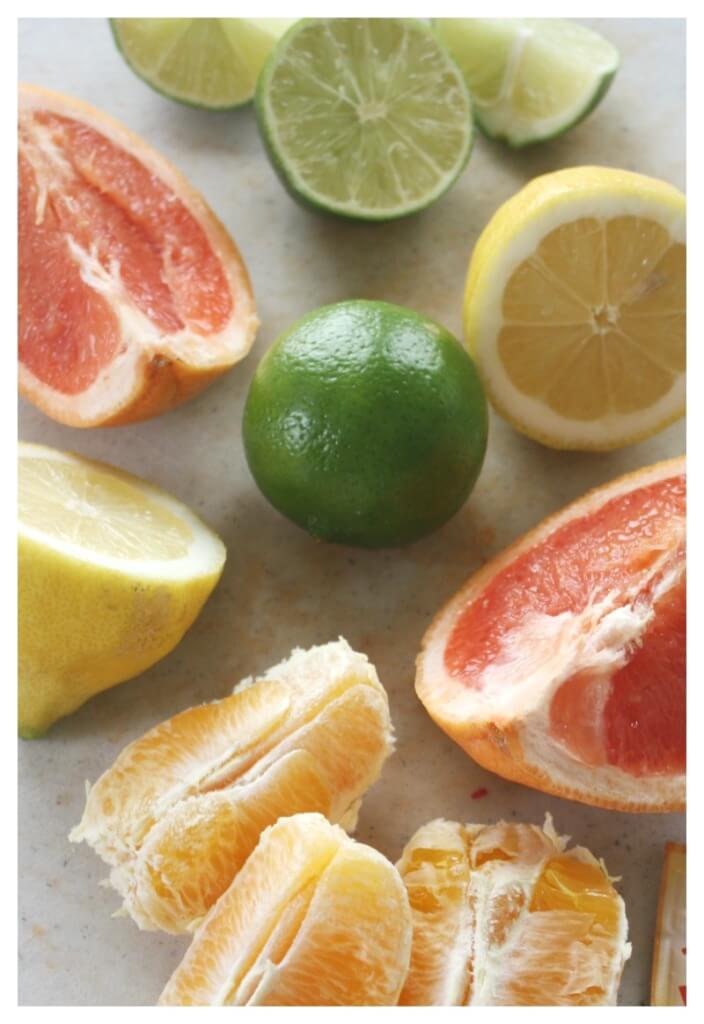
Using The Scientific Method With Kids
The scientific method is a process or method of research. A problem is identified, information about the problem is gathered, a hypothesis or question is formulated from the information, and the hypothesis is tested with an experiment to prove or disprove its validity.
Sounds heavy! What in the world does that mean?!? It means you don’t need to try and solve the world’s biggest science questions! The scientific method is all about studying and learning things right around you.
As children develop practices that involve creating, gathering data evaluating, analyzing, and communicating, they can apply these critical thinking skills to any situation.
READ MORE: The Scientific Method For Kids With Examples
Note: The use of the best Science and Engineering Practices is also relevant to the topic of using the scientific method. Read more and see if it fits your science planning needs.
More Helpful Science Resources
Here are a few resources that will help you introduce science more effectively to your kiddos or students and feel confident yourself when presenting materials. You’ll find helpful free printables throughout.
- Best Science Practices (as it relates to the scientific method)
- Variables In Science
- Observation In Science
- Science Vocabulary
- 8 Science Books for Kids
- All About Scientists
- DIY Science Kits
- Science Tools for Kids
How Does A Citric Acid and Baking Soda Reaction Work?
Lemons, limes, grapefruits and oranges are a natural source of citric acid. This experiment can also be done with citric acid powder, baking soda and water. Similar to our homemade bath bombs.
When the acid from citrus fruit like oranges and lemons combines with baking soda (a base), a chemical change takes place. Learn more about acids and bases here.
The two substances react together to form a new substance, a gas. The gas is carbon dioxide, which can be seen and felt through the fizzing and bubbling of the two ingredients.
Vinegar is a stronger acid than citrus fruit and produces a great chemical reaction but it isn’t the only acid that that works for this type of chemistry experiment. Have fun experimenting with citrus fruit and baking soda!
Click here to get your FREE Science Activities Guide!
Citric Acid and Baking Soda Experiment
Supplies:
- Baking soda
- Assorted citrus fruit; oranges, lemons, lime, grapefruit.
- Muffin tin or small containers.
- Optional; dropper or pipette
Set Up:
STEP 1. Cut the citrus fruit into manageable pieces for smelling and squeezing.
TIP: This is also a great opportunity for younger kiddos to point out different parts of the fruit and examine the seeds. Simple science lessons are everywhere and can happen without kids even knowing it!
Make sure to use your sense of smell with your citrus fruits before you begin experimenting! Will the scents change when mixed with baking soda? Which fruit do you think will have the biggest reaction?
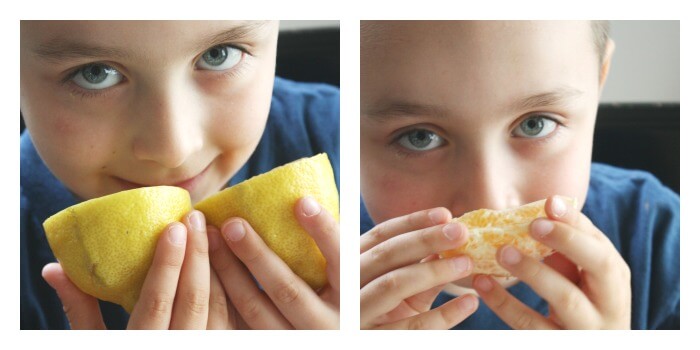
STEP 2. Squeeze all your fruits into small containers to start your citrus chemical reactions experiment. You can label each if desired and create a chart to record your observations.
This experiment is definitely one that can be extended for an older child or used for different aged kids. The colors of the orange juice and lemon juice etc. were good enough for us to remember which was which. We are still in a playful learning stage and charts aren’t necessary.
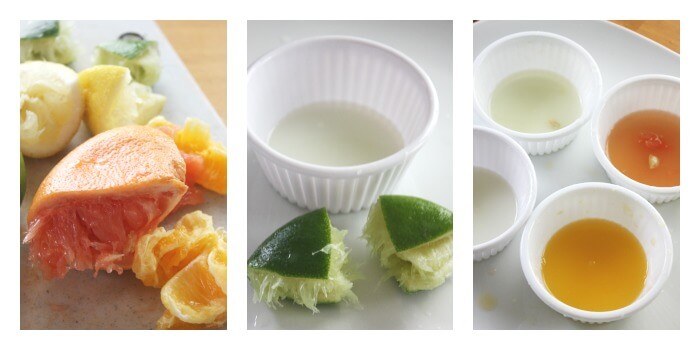
STEP 3. Add approximately 1/2 tablespoon of baking soda to a mini muffin tin. Alternatively you can use cups or small bowls for this part.
With four citrus fruit juices and 12 sections in the tin, we decided to give each fruit three sections. Sneaky math!
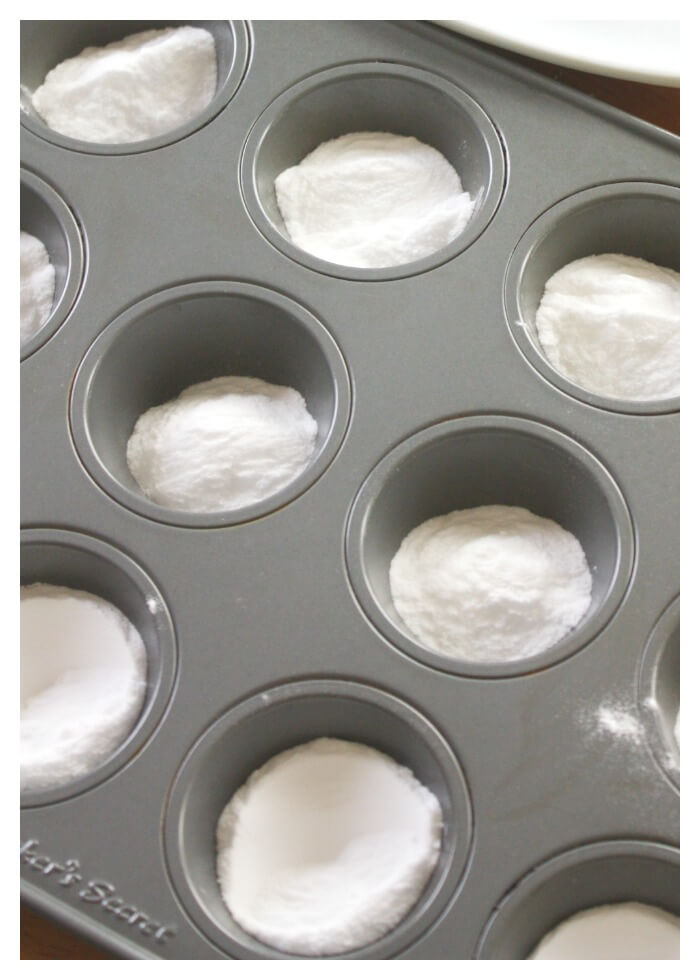
STEP 4. Add orange juice and baking soda together and watch what happens. Repeat with other the fruit juices.
We tested each one to see which would have the biggest chemical reaction. Check out the orange juice below.
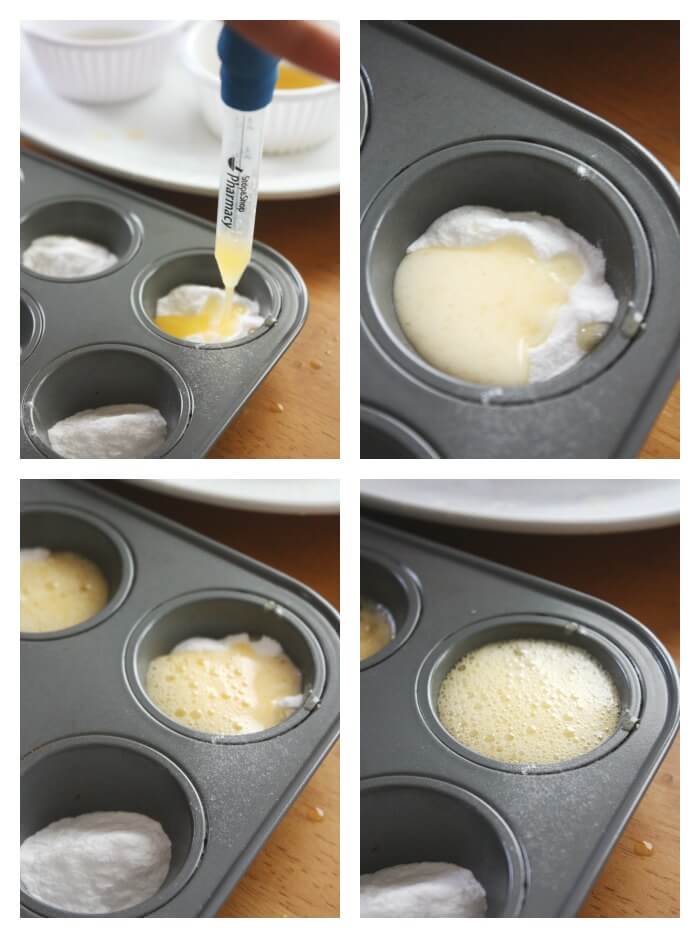
Below you can see both the reactions with grapefruit juice and then with lime and lemon juices. Clearly the lemon juice was the winner here. We also made sure to see if the gas produced by the chemical reaction still smelled like the different fruits we used.
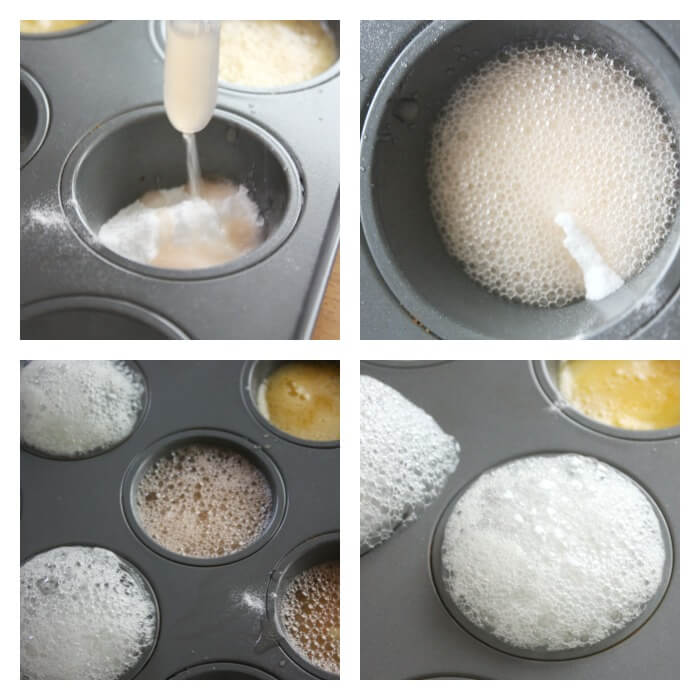
He wanted a big bowl of baking soda and experimented with squeezing all the fruit we still had into it.
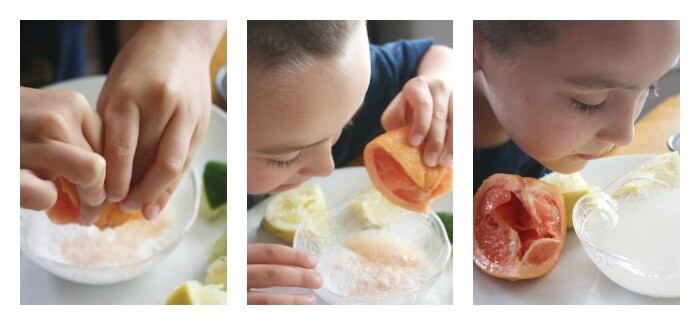
More Fun Science Experiments To Try
- Erupting Mentos and Coke Reaction
- Elephant Toothpaste
- Egg In Vinegar
- Magic Milk
- Skittles Experiment
- Growing Borax Crystals
- Saltwater Density Experiment
Printable Science Projects For Kids
If you’re looking to grab all of our printable science projects in one convenient place plus exclusive worksheets and bonuses like a STEAM Project pack, our Science Project Pack is what you need! Over 300+ Pages!
- 90+ classic science activities with journal pages, supply lists, set up and process, and science information. NEW! Activity-specific observation pages!
- Best science practices posters and our original science method process folders for extra alternatives!
- Be a Collector activities pack introduces kids to the world of making collections through the eyes of a scientist. What will they collect first?
- Know the Words Science vocabulary pack includes flashcards, crosswords, and word searches that illuminate keywords in the experiments!
- My science journal writing prompts explore what it means to be a scientist!!
- Bonus STEAM Project Pack: Art meets science with doable projects!
- Bonus Quick Grab Packs for Biology, Earth Science, Chemistry, and Physics.










Fun idea Sarah! And a great way to introduce some different fruits to the kiddos!